Behavioural modelling - value dimensions (behavioural features)
Working with value dimensions allows you to answer questions such as:
-
Does a person's maximum donation influence their likelihood of taking part in a particular event?
-
Does the mean cost of persons policies influence the likelihood of taking out Cover?
Let's consider the following example:
Does the average length of a person's holiday make them more or less likely to buy insurance cover?
Value dimensions don't just relate to currency information, you can also use numeric variables. This example uses the Holiday Length numeric variable.
Here the behavioural feature needs to:
-
Aggregate bookings up to the person level.
-
Use the value of 'holiday length' combined with the mean function.
-
Calculate the average length of a holiday.
To get started:
-
Right click within the Dimensions panel, hover over Behavioural Modelling and select Create Value aggregation.

The resulting window comprises of 3 sections:
-
The top panels identifies the transactions table and defines the required calculation.
-
The middle panel is where you set the timeframe within which the transactions should have occurred.
-
The bottom panel allows you to add further, specific criteria.
-
Complete the settings as per the screenshot below:
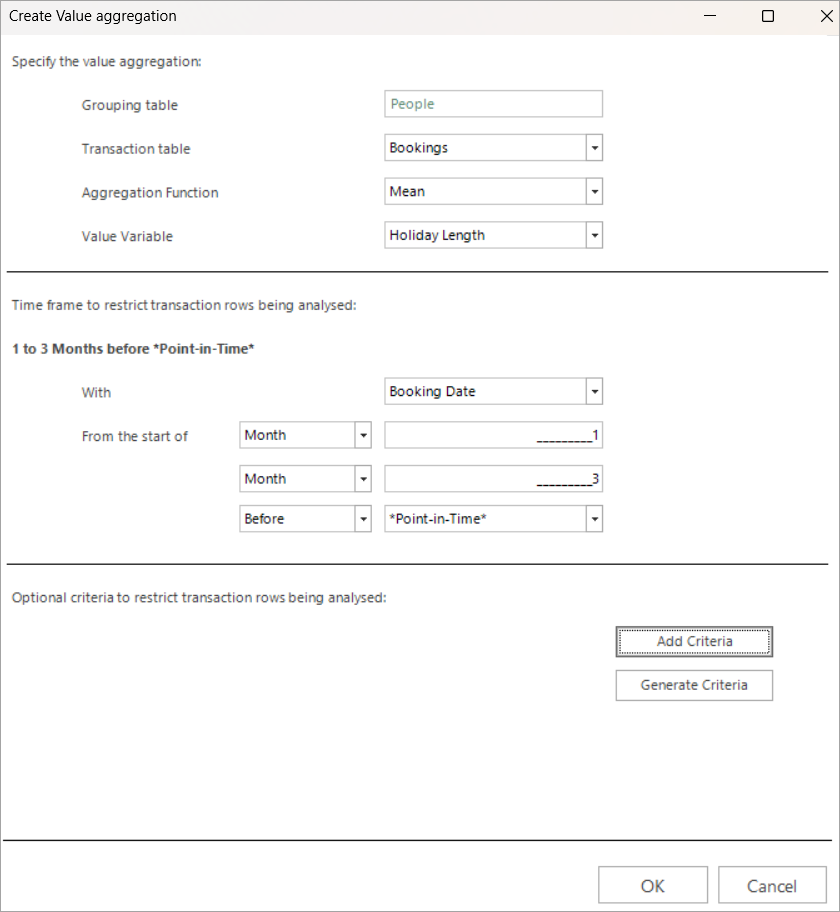
Based on the above settings, for each person, the average length of any holiday bookings made within the last 3 months is calculated.
-
Click OK - a confirmation is displayed:
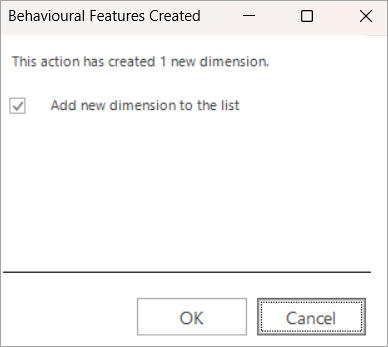
-
Click OK to add the feature to the Dimensions list.

-
Click Build - you are presented with the Build Dimensions Options dialogue
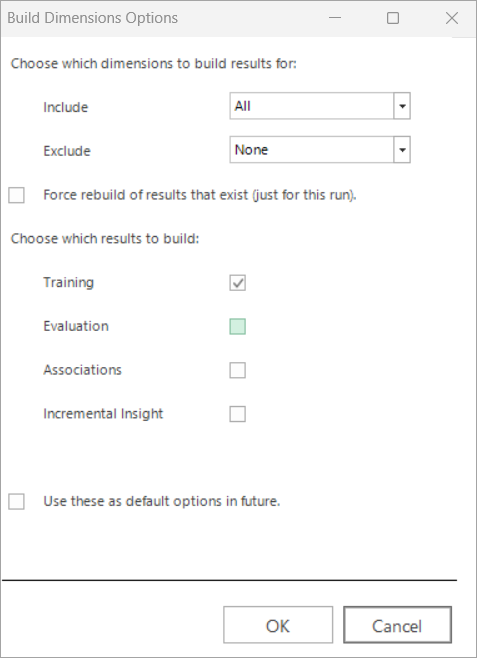
-
Leave the default settings and OK, then confirm Yes.
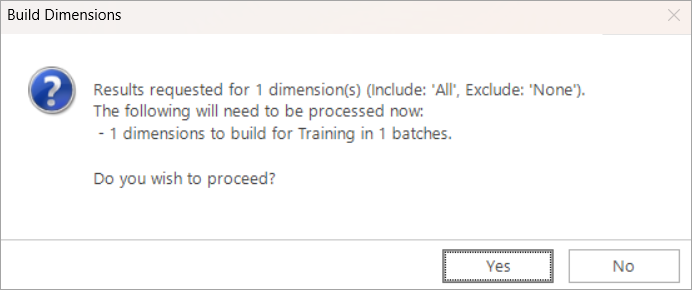
-
Build the Modelling Environment and then highlight the dimension of interest to view the chart display.
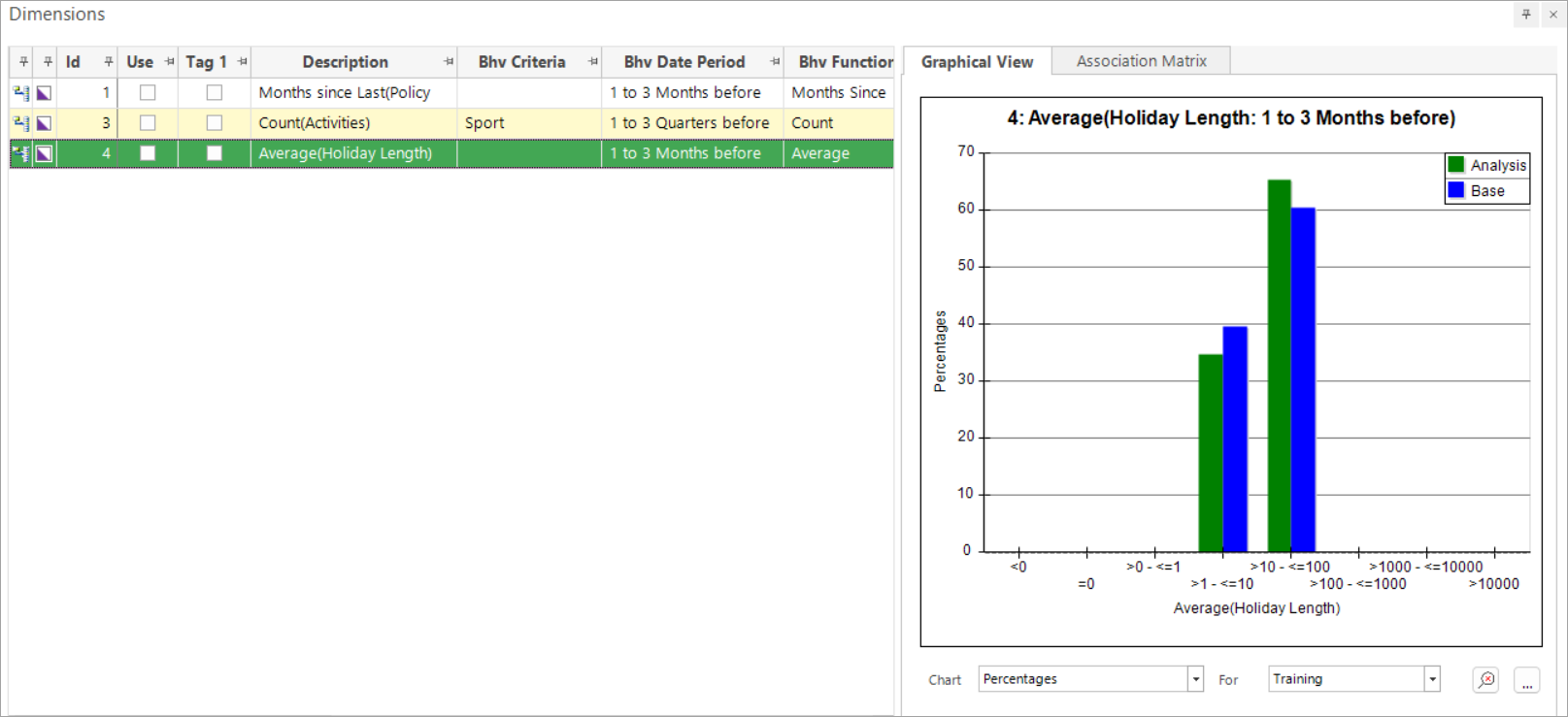
The charts are designed for evaluation purposes. FastStats automatically creates bandings. In this example, the automatic bandings for holiday length are not particularly helpful, but you can override these if necessary - see Behavioural modelling - customising the bands of a dimension (behavioural feature)
For related topics see Behavioural modelling - creating dimensions (behavioural features)